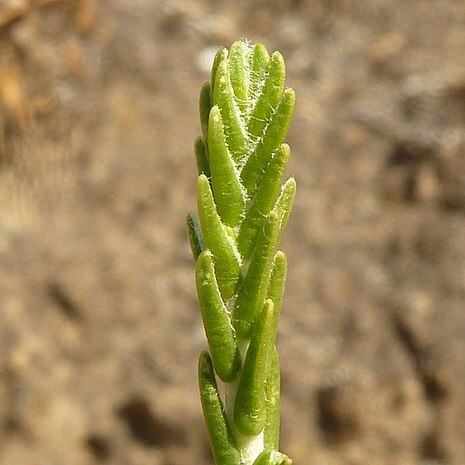Ovary sessile or subsessile, ovoid, 1-locular; disk absent; style filiform, laterally inserted near the apex of the ovary; stigma globose.
Stamens 8, inserted in the throat of the calyx tube, exserted, those opposite the sepals longer; anthers ovate or oblong.
Inflorescence a spike or sometimes subcapitate, terminal or ultimately overtopped by further growth of the branch.
Branches slender, erect or sometimes pendulous, pubescent to tomentose or woolly when young.
Calyx tube flask-shaped or subcylindric, inflated at the base, glabrous to pilose or woolly.
Leaves opposite, decussate, concave or closely involute, lined within with woolly hairs.
Fruit dry or fleshy, enclosed by the persistent base of the calyx tube.
Ericoid, much branched shrublets or shrubs, rarely small trees.
Seed with a black crustaceous testa, and a fine curved beak.
Petals absent.
